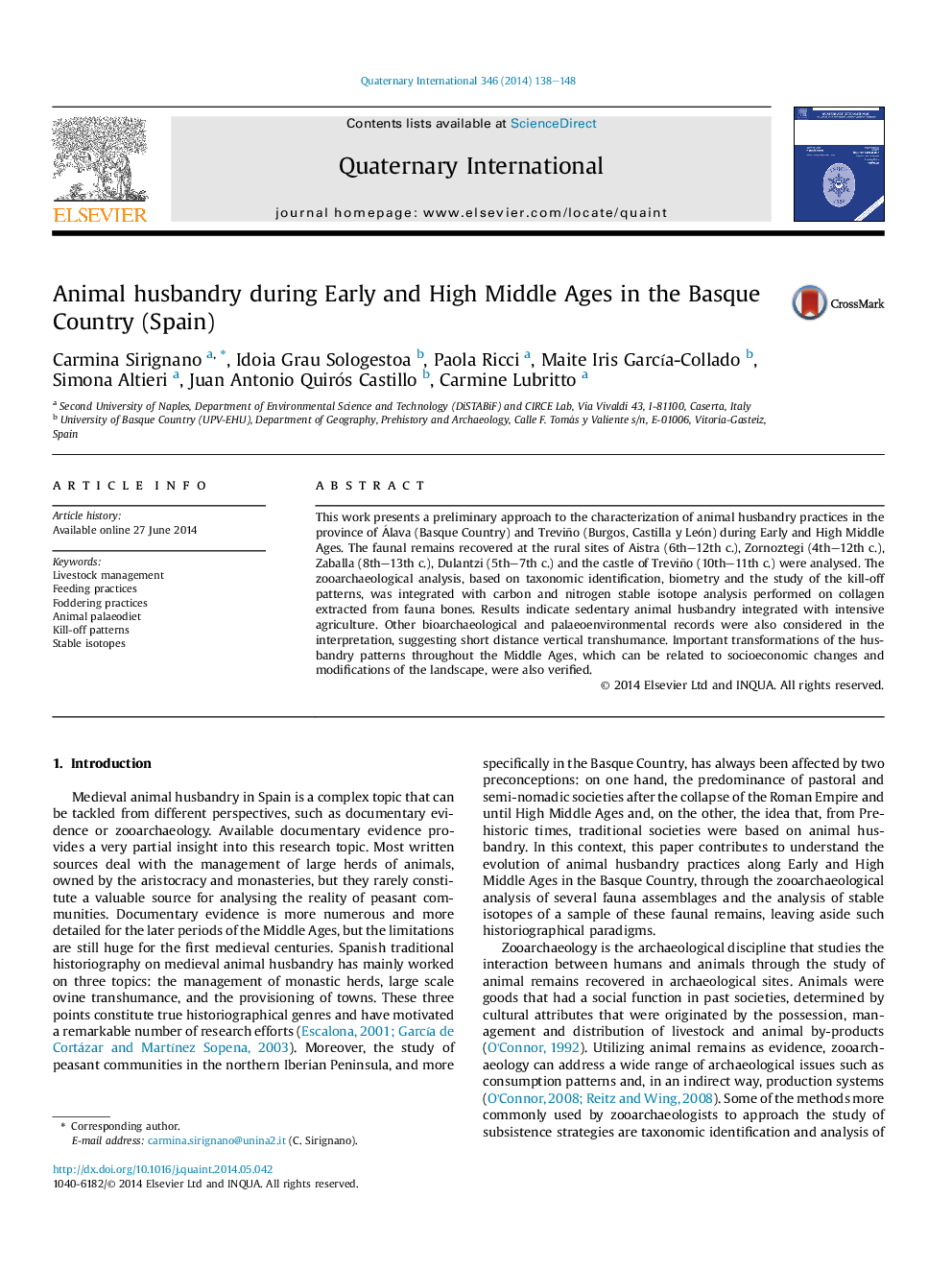| Article ID | Journal | Published Year | Pages | File Type |
|---|---|---|---|---|
| 1041295 | Quaternary International | 2014 | 11 Pages |
This work presents a preliminary approach to the characterization of animal husbandry practices in the province of Álava (Basque Country) and Treviño (Burgos, Castilla y León) during Early and High Middle Ages. The faunal remains recovered at the rural sites of Aistra (6th–12th c.), Zornoztegi (4th–12th c.), Zaballa (8th–13th c.), Dulantzi (5th–7th c.) and the castle of Treviño (10th–11th c.) were analysed. The zooarchaeological analysis, based on taxonomic identification, biometry and the study of the kill-off patterns, was integrated with carbon and nitrogen stable isotope analysis performed on collagen extracted from fauna bones. Results indicate sedentary animal husbandry integrated with intensive agriculture. Other bioarchaeological and palaeoenvironmental records were also considered in the interpretation, suggesting short distance vertical transhumance. Important transformations of the husbandry patterns throughout the Middle Ages, which can be related to socioeconomic changes and modifications of the landscape, were also verified.
